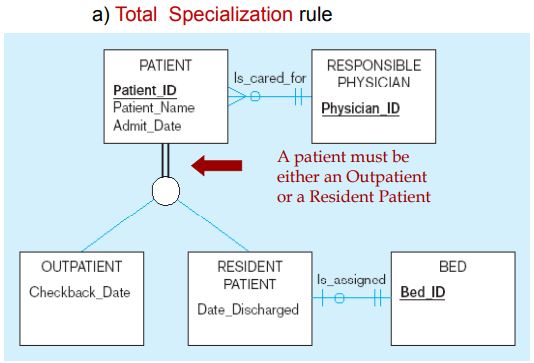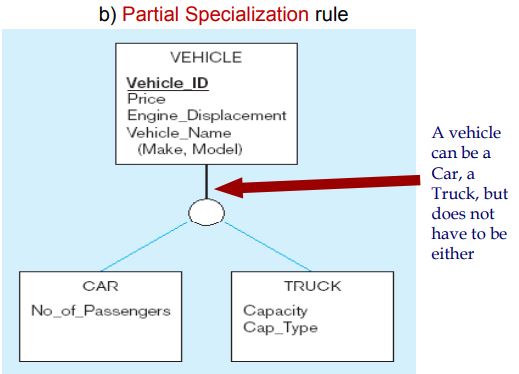Answer: B)Total specialization, Partial specialization
The completeness constraint specifies whether or not an entity in the higher-level entity set must belong to at least one of the lower-level entity sets within the generalization/specialization.
This constraint can be one of the following
- Total specialization:Each higher-level entity(Super Type) must belong to a lower-level entity set(Subtype).

- Partial specialization: Some higher-level entities(SuperType) may not belong to any lower-level entity set(Subtype).
